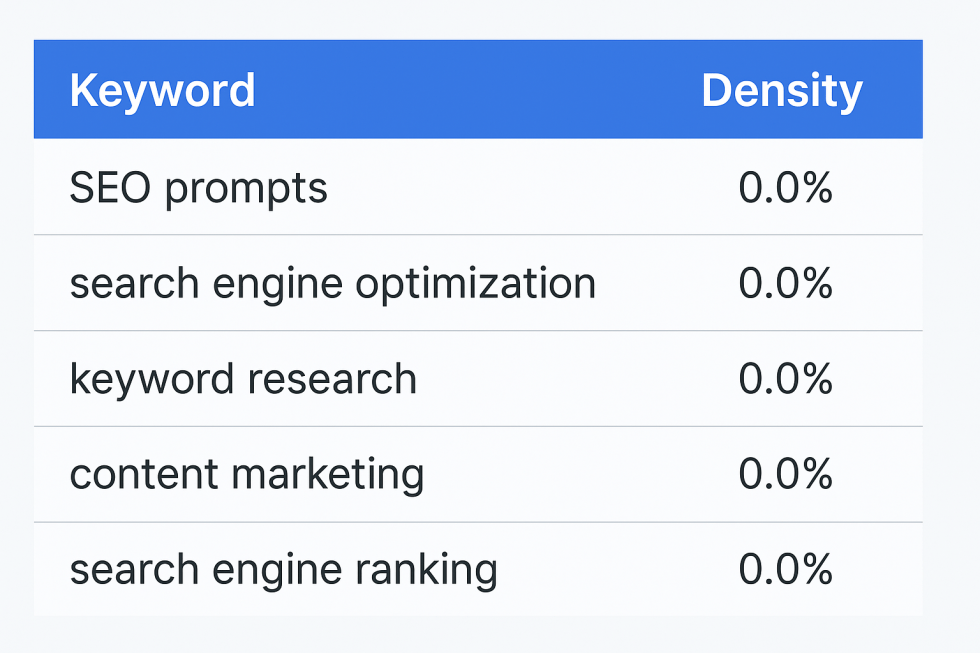
Mastering long-tail keywords is your secret weapon for transforming vague web searches into high-intent visits. These specific, multi-word phrases perfectly match what users are looking for, slashing competition and drawing in qualified leads. For small to medium-sized businesses and e-commerce ventures, this means attracting the right audience, boosting conversions, and standing out—especially with expert guidance from a digital marketing agency in Santa Monica. Dive into this guide to uncover what long-tail keywords are, why they’re game-changers, how to find and use them, real-world wins, and how emerging tech like AI and voice search make them more crucial than ever.
What Exactly Are Long-Tail Keywords, and How Do They Differ from Head Terms?
Long-tail keywords are search phrases, typically three or more words long, designed to capture highly specific user intent. Unlike broad head keywords, such as simply “SEO services,” they zero in on queries like “affordable local SEO services for bakeries.” While these niche phrases have lower search volume, they boast significantly higher conversion potential. Grasping this distinction is the first step toward a results-driven strategy that pairs precision with relevance, ensuring your content speaks directly to your ideal clients’ needs.
What Makes a Keyword a "Long-Tail" Keyword?
A long-tail keyword is a hyper-targeted search phrase defined by three key characteristics:
-
Precision: It hones in on an exact need or question, like “best gluten-free sourdough bread delivery near me.”
-
Lower Search Volume: These phrases attract fewer monthly searches, often under 100, making them much easier to rank for.
-
Higher Conversion Intent: Users typing in detailed queries are typically much closer to making a purchase or booking a service.
By focusing on the long tail instead of generic terms, businesses can align their content with precise user intent, leading to measurable increases in qualified traffic and valuable inquiries.
Long-Tail Keywords: Your SEO Advantage
Long-tail keywords are specific, multi-word phrases that target niche audiences. They typically have lower search volumes but significantly higher conversion rates, making them essential for attracting users with clear intent, boosting SEO, and driving focused traffic.
This source validates the article's central theme by defining long-tail keywords and emphasizing their critical role in SEO.
How Do Long-Tail Keywords Stack Up Against Short-Tail or Head Keywords?
Short-tail (or head) keywords and long-tail keywords represent different points on the search demand spectrum:
| **Keyword Type** | **Search Volume** | **Competition Level** | **Conversion Likelihood** |
| Head Keywords | Sky-High | Intense | Lower (broad interest) |
| Mid-Tail Keywords | Moderate | Moderate | Moderate (some specificity) |
| Long-Tail Keywords | Low | Low to Medium | High (specific user intent) |
Head keywords attract a vast audience but struggle to convert because the searcher’s ultimate goal remains ambiguous. In contrast, long-tail phrases connect detailed queries with tailored content, significantly boosting both ranking potential and return on investment .
Why Are Long-Tail Keywords So Crucial for SEO and Digital Marketing?
Long-tail keywords are indispensable for a robust SEO strategy, offering several key advantages: key insights on referring domains vs backlinks for SEO
-
Enhanced ranking opportunities due to less competition.
-
Highly relevant traffic—users searching specific terms often have clear purchase or inquiry intent.
-
The ability to cover niche topics in depth, solidifying your authority and topical relevance in the eyes of search engines.
These benefits fuel a marketing funnel that captures prospects precisely when they're ready to act, leading to stronger engagement metrics and a direct impact on bookings or sales .
Why Long-Tail Keywords Are Essential for SEO in 2025
Long-tail keywords are longer, more specific search phrases with lower search volumes but less competition. They align closely with user intent, boost conversion rates, and empower smaller businesses to compete effectively in niche markets.
This citation reinforces the advantages of using long-tail keywords, such as improved conversion rates and reduced competition, as discussed throughout the article.
What Are the Core Advantages of Incorporating Long-Tail Keywords into Your SEO Strategy?
Adopting a long-tail keyword approach delivers multiple, tangible benefits that directly contribute to higher-quality traffic and improved financial performance .
How Do Long-Tail Keywords Drive Hyper-Targeted Organic Traffic?
By precisely matching your content to specific search queries, long-tail keywords attract visitors who already know exactly what they’re looking for. This direct alignment results in lower bounce rates and longer site sessions, as users quickly find solutions that meet their precise needs, bypassing generic information.
How Do Long-Tail Keywords Reduce Competition and Elevate Ranking Potential?
Focusing on niche search phrases means you’re competing against a much smaller pool of websites. Practically speaking, pages optimized for highly specific queries can achieve top search result rankings with fewer backlinks and less on-page optimization effort, allowing smaller businesses to outperform larger competitors with broader strategies.
Long-tail keywords can significantly impact search traffic and SERP rankings
Long-tail keywords can significantly impact search traffic and SERP rankings by helping websites rank quickly for specific queries. Despite their lower search volume, these keywords attract highly targeted traffic, leading to better user engagement and conversion rates.
This citation supports the article's assertions regarding the impact of long-tail keywords on search traffic and rankings.
How Do Long-Tail Keywords Supercharge Conversion Rates and ROI?
A narrow search focus strongly correlates with purchase readiness. Research indicates that long-tail searches convert up to 36% more effectively than broad head terms.
Long-tail keywords have higher conversion rates
Long-tail keywords boast a higher conversion rate, averaging 36%, compared to the 11.45% conversion rate of top-performing landing pages.
This source provides concrete data on the superior conversion rates associated with long-tail keywords, reinforcing the article's claims about their effectiveness.
By capturing visitors at the critical moment of decision, businesses can achieve a faster return on their content creation and optimization investments.
How Do Long-Tail Keywords Optimize for Voice Search and AI-Powered Search?
Conversational queries, which are common with voice assistants and AI search summaries, naturally lean towards longer, question-based phrases. Preparing your content to address these patterns ensures your visibility in evolving SERP features like AI-generated answer boxes and voice-activated responses .
Voice Search Optimisation: Why Long-Tail Keywords Are Key
Long-tail keywords are fundamental for optimizing content for voice search. They align perfectly with the natural language patterns used in voice queries, increasing the likelihood of your content being selected by voice assistants.
This source directly supports the article's discussion on how long-tail keywords are optimized for voice search.
How Can You Effectively Discover and Research Long-Tail Keywords?
Pinpointing the right long-tail targets requires a strategic blend of specialized tools, insights from search engines, and thorough competitive analysis .
What Are the Top Keyword Research Tools for Uncovering Long-Tail Keywords?
-
Semrush Keyword Magic Tool: Provides related suggestions and intent filters.
-
Ahrefs Keywords Explorer: Uncovers question queries and organizes them into parent topic clusters.
-
KWFinder: Highlights low-competition opportunities with essential volume and trend data.
These powerful platforms streamline the process of building comprehensive long-tail keyword lists for strategic content planning.
How Can Google Autocomplete and "People Also Ask" Aid in Identifying Long-Tail Keywords?
As you type a phrase into Google, the autocomplete dropdown reveals popular continuations. Likewise, the "People Also Ask" box surfaces related user questions. Recording these suggestions is an excellent way to uncover real-world long-tail queries that mirror actual search behavior.
How Does Competitor Analysis Enhance Long-Tail Keyword Research?
Examining the top-ranking competitor pages for niche topics reveals the specific long-tail phrases they are targeting. By scrutinizing their headings, subheadings, and on-page copy, you can identify gaps in their content coverage and craft your own content around underserved queries .
How Should You Implement Long-Tail Keywords in Your Content and SEO Strategy?
What Are the Best Practices for Integrating Long-Tail Keywords into Website Content?
Begin by naturally weaving each keyword into your titles, subheadings, and introductory sentences. Then, aim to thoroughly answer the implied question within the first 60 words to maximize your chances of securing a featured snippet. Reinforce semantic relevance by supporting your discussion with related synonyms and entity references.
How Should Long-Tail Keywords Be Utilized in E-commerce Product Descriptions and Category Pages?
For product copy, integrate long-tail phrases that combine product features, specific use cases, and important qualifiers (e.g., “waterproof hiking boots for winter conditions”). On category pages, organize related long-tail terms into bulleted lists to provide clear guidance for both users and search engines navigating your comprehensive offerings.
How Can Long-Tail Keywords Bolster Local SEO and Small Business Growth?
Local modifiers, such as city names or “near me” terms, transform general services into geo-targeted queries (e.g., “best web design agency in Austin”). Embedding these phrases within your Google Business Profile description, local landing pages, and customer reviews significantly boosts visibility among nearby searchers who are ready to engage your services.
How Do You Effectively Measure the Success of Your Long-Tail Keyword Strategy?
Monitor key performance indicators such as organic sessions from targeted pages, ranking positions for each specific long-tail phrase, conversion rates on specialized landing pages, and appearances in SERP features (like snippets and PAA boxes). Regular reporting will reveal which phrases deliver the best ROI and where further optimization efforts are most needed.
What Are Real-World Examples of Long-Tail Keywords Driving Business Success?
Practical case studies vividly illustrate how precise targeting translates into measurable business growth .
What Are Effective Long-Tail Keyword Examples for Small to Medium-Sized Businesses?
A local bakery specializing in gluten-free products saw a 25% increase in online orders by targeting “best gluten-free sourdough bread delivery in Denver.” A coaching practice successfully filled its program slots within weeks by using “life coach for recent college graduates in New York City.”
How Have E-commerce Store Owners Benefited from Long-Tail Keyword Optimization?
An online jewelry retailer boosted organic sales by 40% and reduced its cost-per-acquisition by 30% by optimizing product pages for “sterling silver minimalist earrings for sensitive ears,” attracting a highly qualified audience.
How Do Long-Tail Keywords Align with User Intent Across Various Industries?
In the B2B SaaS sector, phrases like “affordable project management software for remote teams” effectively capture buyers actively seeking specific solutions. In the travel industry, queries such as “family-friendly beach resorts in Costa Rica under $200” convert aspirational planners into confirmed bookings.
How Is AI and Voice Search Reshaping the Role of Long-Tail Keywords in SEO?
What Is AI-Powered Search, and Why Does It Favor Long-Tail Keywords?
AI-powered search, including Google’s generative overviews, synthesizes answers by drawing from multiple sources. This process relies heavily on detailed, context-rich content , making long-tail phrases essential for inclusion in AI-generated results and answer boxes.
How Can You Optimize Long-Tail Keywords for Conversational and Voice Queries?
Craft your content in natural, question-and-answer formats within paragraphs—avoiding formal Q&A lists—and incorporate colloquial language and synonyms. Structured narratives that closely mirror spoken queries tend to rank higher for voice assistants.
What Future Trends Should Businesses Monitor Regarding Long-Tail Keywords and AI Search?
Anticipate deeper integrations of knowledge graphs and enhanced entity understanding within search engines. Prepare by building content hubs that interlink thematic pages, consistently updating statistics, and refreshing your narratives to reflect evolving conversational patterns.
What Frequently Asked Questions Do Users Have About Long-Tail Keywords?
While these questions often appear in search forums and "People Also Ask" sections, understanding them as overarching themes helps in crafting content that satisfies user curiosity without needing a formal Q&A format .
What Are Long-Tail Keywords?
Long-tail keywords are multi-word search phrases that pinpoint precise user needs, resulting in less competition and higher conversion intent. Their specificity makes them ideal for content designed to guide prospects toward taking action.
Why Are Long-Tail Keywords Crucial for SEO?
Because they precisely match detailed queries, long-tail phrases unlock superior ranking potential in niche SERPs and attract visitors who are significantly more likely to convert, thereby improving the overall ROI of your content efforts .
How Do Long-Tail Keywords Enhance User Intent Matching?
By aligning your page topics with the exact wording of a search query, long-tail keywords ensure your content directly answers user questions. This leads to lower bounce rates, extended dwell times, and improved user engagement metrics.
What Are Effective Methods for Finding Long-Tail Keywords?
Employ a combination of specialized tools (such as Semrush and Ahrefs), search engine suggestions (like autocomplete and related questions), and competitor analysis to compile a robust list of candidate phrases for targeted content development .
What Are Examples of Long-Tail Keywords for Various Business Types?
For a fitness brand: “beginner yoga routines for desk workers.” For a legal practice: “estate planning attorney for blended families in Chicago.” For a home goods store: “organic bamboo cutting boards with juice groove.”
Businesses that produce detailed, semantically rich content centered around these long-tail themes establish an authoritative presence in search results, attract their ideal audience, and convert more efficiently—driving sustainable growth and maximizing marketing ROI. Continuous refinement of these phrases, guided by performance data and emerging search patterns, ensures ongoing relevance and a sustained competitive edge .
📧 Stay Updated
Get the latest web development tips and insights delivered to your inbox.




